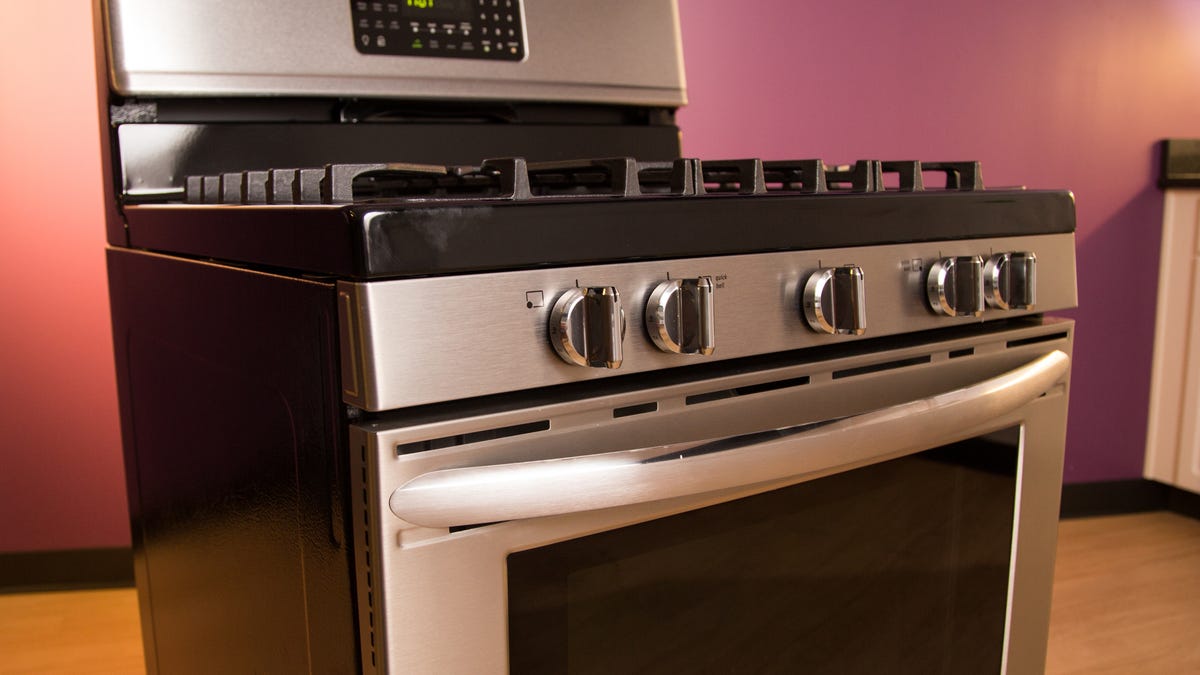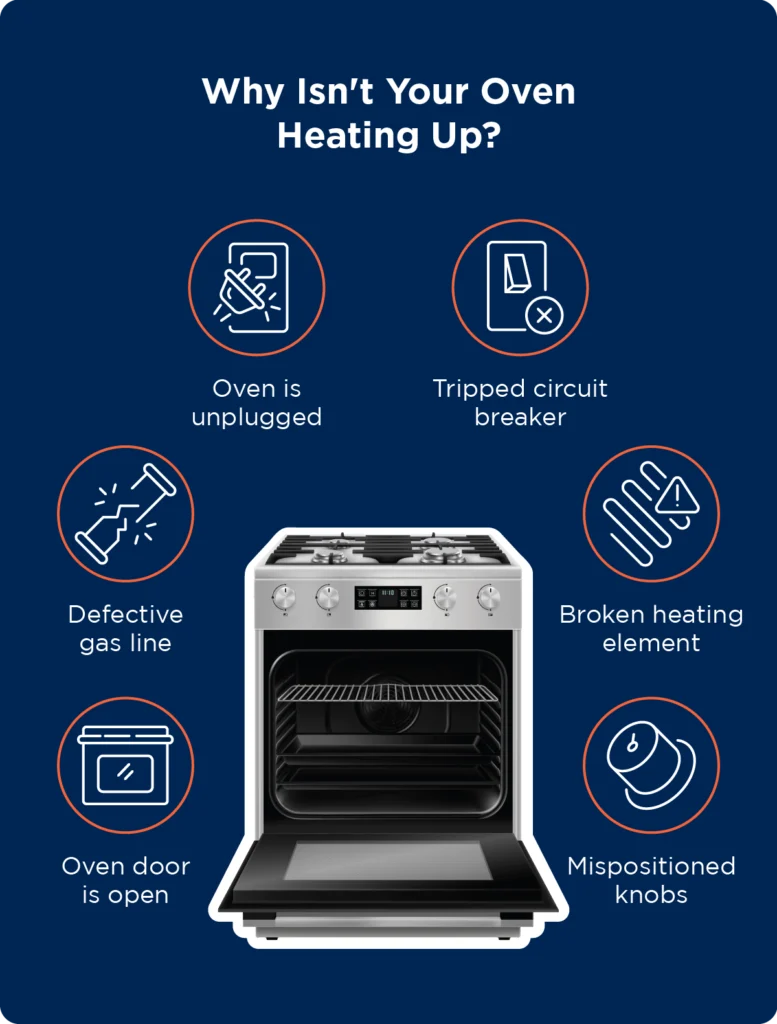Is your electric oven failing to reach the desired temperature? This common issue can be frustrating, especially when you need consistent heating for your recipes.
An electric oven not getting up to temperature can stem from various reasons. It might be due to a faulty heating element, a malfunctioning thermostat, or even a problem with the oven’s electrical connections. Understanding the root cause is crucial to fixing the issue and ensuring your oven functions correctly.
In this post, we will explore the possible reasons behind your oven’s temperature problems, helping you troubleshoot and fix the issue effectively. Whether you’re a seasoned cook or a kitchen novice, this guide will provide you with the necessary insights to get your oven back to perfect working condition.

Credit: www.cnet.com
Common Issues With Electric Ovens
Electric ovens are convenient for many households, but they can sometimes fail to reach the desired temperature. Understanding the common issues with electric ovens can help you troubleshoot and fix these problems.
Faulty Heating Elements
The heating elements in your electric oven are crucial. They generate the heat needed to cook your food. If these elements are faulty, your oven may not get hot enough.
- Broken or Burnt Out: A heating element may break or burn out over time.
- Visible Damage: Look for visible signs of damage, such as cracks or blisters.
- Testing: Use a multimeter to test for continuity. No continuity means the element is faulty.
Thermostat Problems
The thermostat regulates the temperature inside your oven. If it is not working properly, your oven may not heat up as expected.
- Incorrect Readings: The thermostat may give incorrect temperature readings.
- Calibration: Check if your thermostat needs recalibration.
- Replacement: If recalibration doesn’t help, consider replacing the thermostat.
Understanding these common issues can help you diagnose why your electric oven is not getting up to temperature.
Inspecting The Heating Elements
Is your electric oven not reaching the right temperature? One common issue could be a faulty heating element. Inspecting the heating elements is crucial. It ensures your oven functions correctly. Below, we will discuss signs of a faulty element and how to test the elements.
Signs Of A Faulty Element
A faulty heating element can cause uneven cooking. Look for visible signs of damage. A damaged element might have burn marks. It could also be blistered or broken. If the element doesn’t glow red, it might be faulty. Sometimes, the oven might take longer to preheat. These are all signs that your heating element needs inspection.
How To Test The Elements
First, ensure the oven is unplugged. Safety is crucial. Next, locate the heating elements. They are usually at the bottom and top of the oven. Carefully remove them. Use a multimeter to test the elements. Set the multimeter to the lowest ohms setting. Touch the multimeter probes to the element terminals. A good element should show low resistance. High or infinite resistance means the element is faulty. Replace it if necessary.
Thermostat Troubleshooting
Your electric oven might not be reaching the right temperature. The thermostat could be the problem. This device controls the oven’s heating. If it fails, your oven won’t heat properly. Troubleshooting the thermostat can help fix the issue.
Calibrating The Thermostat
The thermostat calibration might be off. This means the actual temperature is different from the set temperature. Start by checking the oven’s manual. It will have instructions on how to calibrate the thermostat. Use an oven thermometer to compare temperatures. Adjust the thermostat settings as needed. Small changes can make a big difference.
Replacing A Malfunctioning Thermostat
If calibration does not work, the thermostat might be faulty. A malfunctioning thermostat cannot be fixed. It needs replacement. Disconnect the oven from the power source first. Remove the back panel to access the thermostat. Follow the manual’s instructions to replace it. Ensure the new thermostat is compatible with your oven model. Once replaced, test the oven’s temperature. It should now reach the correct temperature.

Credit: www.kellyvision-peterborough.co.uk
Checking The Oven Sensor
If your electric oven is not reaching the desired temperature, the oven sensor might be the problem. Understanding how to check the sensor can help fix the issue. This guide will walk you through the process step by step.
Sensor Function And Location
The oven sensor measures the temperature inside the oven. It sends this information to the control board. The control board then adjusts the heating elements accordingly.
Typically, the sensor is a thin, metal rod. It is usually found at the back of the oven, near the top. Identifying the sensor is the first step in troubleshooting.
Testing The Sensor
To test the sensor, you will need a multimeter. This tool measures electrical resistance. First, ensure the oven is unplugged. Safety is paramount.
Next, locate the sensor and disconnect its wire harness. Set the multimeter to the ohms setting. Attach the multimeter probes to the sensor terminals.
The sensor should read around 1,080 ohms at room temperature. A reading significantly higher or lower indicates a faulty sensor. If the sensor is faulty, replacing it may solve the temperature issue.
Electrical Connections
Sometimes your electric oven may not reach the right temperature. One common issue is with the electrical connections. Faulty wiring or incorrect voltage can cause this. Let’s dive into some key areas to inspect.
Inspecting The Wiring
Begin by checking the wiring inside your oven. Look for any loose or disconnected wires. These can prevent your oven from heating properly. Damaged wires can also be a problem. Frayed or burnt wires need immediate attention. Replace damaged wires to ensure safety and proper function.
Ensuring Proper Voltage
Another crucial aspect is ensuring proper voltage. An electric oven requires a specific voltage to operate correctly. Use a multimeter to check the voltage at the outlet. Compare this with the oven’s required voltage, found in the manual. If the voltage is incorrect, contact an electrician. They can adjust the power supply to match your oven’s needs. Proper voltage ensures efficient and consistent heating.
Oven Door Seal Issues
When your electric oven is not getting up to temperature, the oven door seal could be the culprit. The door seal, also known as a gasket, plays a critical role in maintaining the oven’s temperature. A faulty seal allows heat to escape, leading to uneven and insufficient cooking temperatures.
Identifying Seal Problems
To check for seal problems, inspect the door seal carefully. Look for any visible damage such as cracks, tears, or wear. A worn-out seal often appears brittle or flattened. You can also perform a simple test: close the oven door on a piece of paper and try to pull it out. If the paper slides out easily, the seal is not tight enough.
Replacing The Door Seal
Replacing the door seal is straightforward. First, ensure the oven is off and cool. Open the oven door and locate the screws or clips holding the old seal in place. Remove these carefully. Take the old seal to a hardware store to get an exact match. Install the new seal by positioning it around the door edge and securing it with the screws or clips. Ensure the seal fits snugly.
Regularly checking and replacing the oven door seal keeps your oven efficient. It ensures even cooking and saves energy.
Control Board Problems
One common issue with electric ovens not getting up to temperature is control board problems. The control board acts as the brain of your oven. It sends signals to various components to regulate temperature and other functions. When the control board malfunctions, it can lead to inaccurate temperature readings and other issues. Understanding how to address these problems can save you time and money.
Resetting The Control Board
Sometimes, a simple reset can fix control board issues. Start by turning off the oven. Unplug it from the wall outlet. Wait for about five minutes. This allows the control board to reset. Plug the oven back in and turn it on. Check if the temperature issue is resolved.
Repairing Or Replacing The Board
If resetting doesn’t work, you might need to repair or replace the control board. First, consult your oven’s manual. It may contain troubleshooting steps. If the problem persists, consider calling a professional technician. They can diagnose if the control board needs repair or replacement. Replacing the control board can be complex. It often involves dealing with electrical components. Leave this task to a qualified technician to ensure safety.
When To Call A Professional
When your electric oven stops reaching the right temperature, it disrupts your cooking plans. Sometimes, simple fixes can solve the problem. But there are times when only a professional can help. Knowing when to call a professional can save you time and prevent further damage.
Signs You Need Expert Help
If the oven’s temperature fluctuates wildly, you need expert help. A faulty thermostat or sensor could be the cause. Strange noises coming from the oven also require professional attention. These noises might indicate a failing component. If the oven doesn’t heat up at all, it’s time to call in a technician. This could be an electrical issue or a broken heating element.
Choosing A Qualified Technician
Look for a technician with proper certifications. Certifications ensure they have the right skills. Check their reviews online. Good reviews often mean reliable service. Ask friends or family for recommendations. Personal experiences can guide you to the right professional. Ensure the technician offers a warranty on their work. A warranty provides peace of mind and guarantees quality service.

Credit: www.maytag.com
Frequently Asked Questions
Why Is My Electric Oven Not Heating Properly?
There may be several reasons, including a faulty heating element, thermostat issues, or problems with the electrical connections.
How Can I Fix My Electric Oven Temperature?
Check the heating element, thermostat, and electrical connections. Replace any faulty parts or consult a professional.
Why Does My Oven Take So Long To Heat Up?
A malfunctioning heating element or a faulty thermostat can cause your oven to heat up slowly.
What Should I Do If My Oven Is Not Getting Hot Enough?
Inspect the heating element and thermostat. Ensure the oven door seals properly to retain heat.
Conclusion
Fixing your electric oven can be simple. Start with basic troubleshooting steps. Check the power supply and settings. Inspect the heating elements. Make sure the thermostat works correctly. Sometimes, a faulty temperature sensor is the problem. Clean your oven regularly to ensure efficiency.
Consult a professional if issues persist. Regular maintenance prevents future problems. A well-functioning oven makes cooking easier and more enjoyable. Keep your kitchen running smoothly by addressing issues early.


